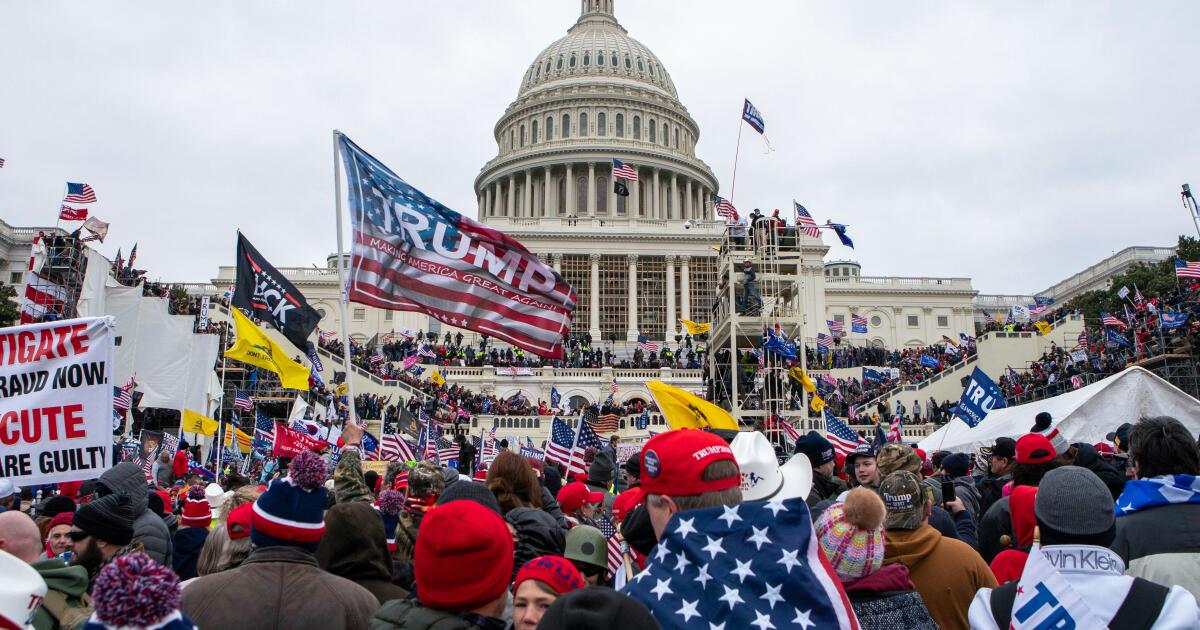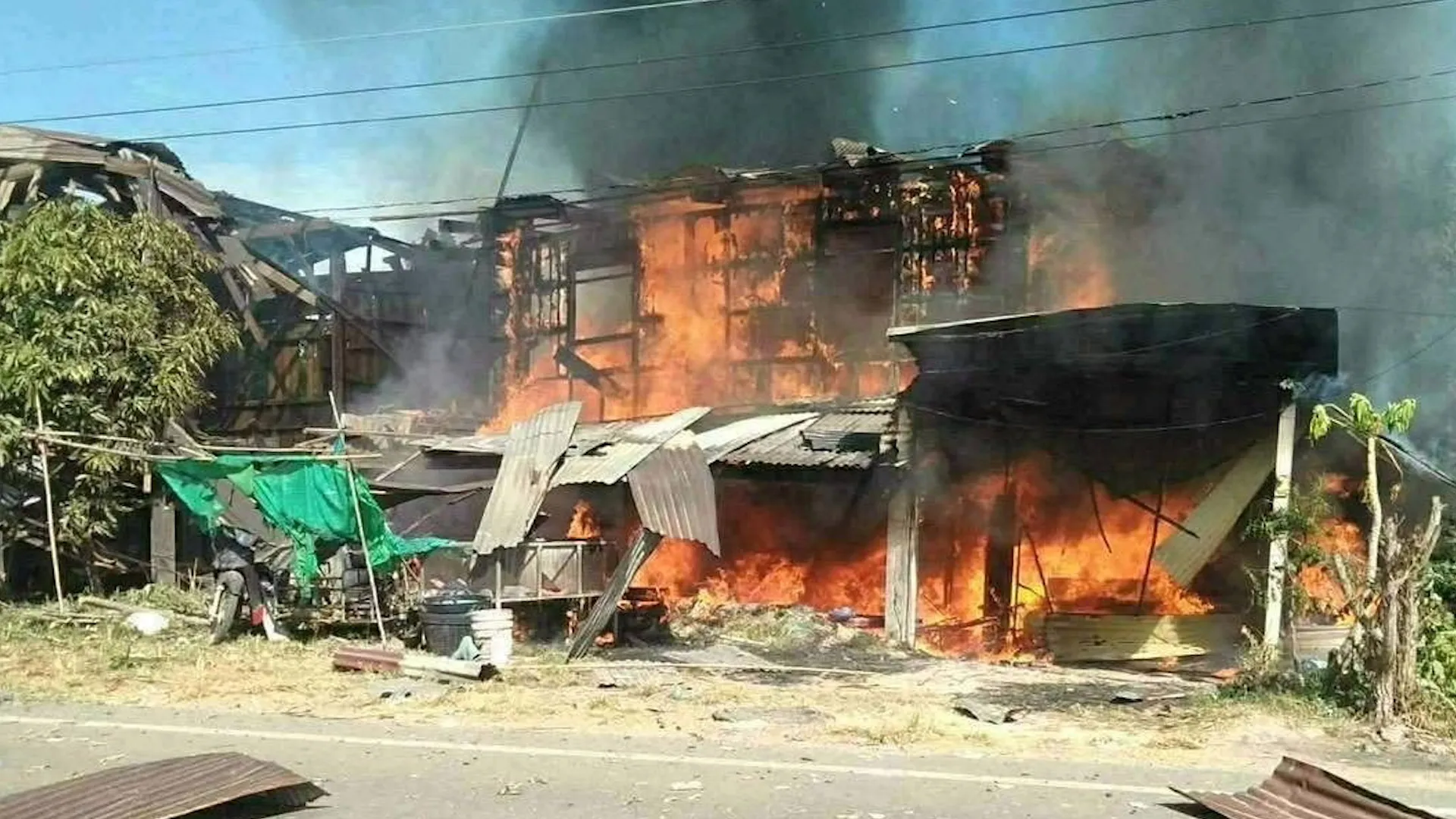Claims about Trump in Epstein files are ‘untrue,’ the Justice Department says
WASHINGTON — Tips provided to federal investigators about Donald Trump’s alleged involvement in Jeffrey Epstein’s schemes with young women and girls are “sensationalist” and “untrue,” the Justice Department said on Tuesday, after a new tranche of files released from the probe featured multiple references to the president.
The documents include a limousine driver reportedly overhearing Trump discussing a man named Jeffrey “abusing” a girl, and an alleged victim accusing Trump and Epstein of rape. It is unclear whether the FBI followed up on the tips. The alleged rape victim died from a gunshot wound to the head after reporting the incident.
Nowhere in the newly released files do federal law enforcement agents or prosecutors indicate that Trump was suspected of wrongdoing, or that Trump — whose friendship with Epstein lasted through the mid-2000s — was investigated himself.
But one unidentified federal prosecutor noted in a 2020 email that Trump had flown on Epstein’s private jet “many more times than previously has been reported,” including over a time period when Ghislaine Maxwell, Epstein’s top confidante who would ultimately be convicted on five federal counts of sex trafficking and abuse, was being investigated for criminal activity.
The Justice Department released an unusual statement unequivocally defending the president.
“Some of these documents contain untrue and sensationalist claims made against President Trump that were submitted to the FBI right before the 2020 election,” the Justice Department statement read. “To be clear: the claims are unfounded and false, and if they had a shred of credibility, they certainly would have been weaponized against President Trump already.”
“Nevertheless, out of our commitment to the law and transparency, the DOJ is releasing these documents with the legally required protections for Epstein’s victims,” the department added.
The Justice Department files were released with heavy redactions after bipartisan lawmakers in Congress passed a new law compelling it to do so, despite Trump lobbying Republicans aggressively over the summer and fall to oppose the bill. The president ultimately signed the Epstein Files Transparency Act into law after the legislation passed with veto-proof majorities in both chambers.
One newly released file containing a letter purportedly from Epstein — a notorious child sex offender who died in jail while awaiting federal trial on sex-trafficking charges — drew widespread attention online, but was held up by the Justice Department as an example of faulty or misleading information contained in the files.
The letter appeared to be sent by Epstein to Larry Nassar, another convicted sex offender, shortly before Epstein’s death. The letter’s author suggested that Nassar would learn after receiving the note that Epstein had “taken the ‘short route’ home,” possibly referring to his suicide. It was postmarked from Virginia on Aug. 13, 2019, despite Epstein’s death in a Manhattan jail three days prior.
“Our president shares our love of young, nubile girls,” the letter reads. “When a young beauty walked by he loved to ‘grab snatch,’ whereas we ended up snatching grub in the mess halls of the system. Life is unfair.”
The Justice Department said that the FBI had confirmed that the letter is “FAKE” after it made the rounds on Tuesday.
“This fake letter serves as a reminder that just because a document is released by the Department of Justice does not make the allegations or claims within the document factual,” the department posted on social media. “Nevertheless, the DOJ will continue to release all material required by law.”
The department has faced bipartisan scrutiny since failing to release all of the Epstein files in its possession by Dec. 19, the legal deadline for it to do so, and for redacting material on the vast majority of the documents.
Justice Department officials said they were following the law by protecting victims with the redactions. The Epstein Files Transparency Act also directs the department not to redact images or references to prominent or political figures, and to provide an explanation for each and every redaction in writing.
The latest release, just days before the Christmas holiday, includes roughly 30,000 documents, the department said. Hundreds of thousands more are expected to be released in the coming weeks.
Democrats on the House Oversight Committee released a statement in response to the Tuesday release accusing the Justice Department of a “cover-up,” writing on social media, “the new DOJ documents raise serious questions about the relationship between Epstein and Donald Trump.”
Documents from Epstein’s private estate released by the oversight committee earlier this fall had already cast a spotlight on that relationship, revealing Epstein had written in emails to associates that Trump “knew about the girls.”
The latest documents release also includes an email from an individual identified as “A,” claiming to stay at Balmoral Castle, a royal residence in Scotland, asking Maxwell if she had found him “some new inappropriate friends.” Andrew Mountbatten-Windsor, formerly known as Prince Andrew, has come under intense scrutiny over his ties to Epstein in recent years.
Speaking at his Mar-a-Lago resort in Florida on Monday, Trump said the continuing Epstein scandal amounts to a “distraction” from Republican successes, and expressed disapproval over the release of images in the files that reveal associates of Epstein.
“I believe they gave over 100,000 pages of documents, and there’s tremendous backlash,” Trump told reporters. “It’s an interesting question, because a lot of people are very angry that pictures are being released of other people that really had nothing to do with Epstein. But they’re in a picture with him because he was at a party, and you ruin a reputation of somebody. So a lot of people are very angry that this continues.”







